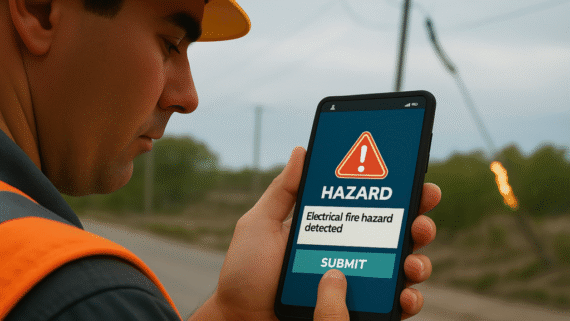
Top 12 Characteristics of Great Safety Leaders
According to the Association of Workers’ Compensation Boards of Canada, there were more than 1,000 workplace fatalities in 2018. In industries like construction, oil, and mining, the importance of safety leadership in the workplace is even more critical because they are inherently more dangerous jobs. If you want to stand out as a great safety leader in your company, then demonstrate these top 12 characteristics at work.
1. Lead by Example
When it comes to safety, it is not enough to just talk the talk. Creating a strong safety culture requires that you walk the walk while on site, in the office, and at training. By being the model of safe behaviour, other people are less likely to find shortcuts around rules, policies, and procedures.
2. High Expectations of Colleagues
Good leaders have high expectations of themselves, but great leaders have high expectations of everyone around them. You must be willing to call out unacceptable behaviour and train others about proper procedure. However, don’t forget to recognize those who exemplify the safety culture you are trying to create. This motivates employees to behave better, and shows them what acceptable behaviour looks like.
3. Go Against the Grain
Holding people accountable for compliance is not always popular, but strong leaders do it anyways. You gain respect when you stand up for what is right, and when others see you push back against unacceptable behaviour, they feel safer doing it, too.
4. Leader Regardless of Title
Titles don’t make leaders; actions do. You become a leader when you repeatedly do the right thing and inspire others to follow suit. Simple ways to start motivating those around you (no matter their title or rank in the company) include publicly recognizing good behaviour, mentoring new hires, and setting safety goals for the entire organization.

5. Continuous Learning
Even great companies have room to improve, especially since technology and regulations continually change. Displaying safety leadership means looking at performance, figuring out what is going well, and identifying areas of opportunity. Leadership development is a lifelong process, and great safety leaders know that they always have something to learn.
6. Respond to Feedback Quickly
Feedback is only a gift if it results in better performance and results. A strong leader is open to feedback from all levels of the organization, and he or she has the ability to quickly prioritize next steps and respond with solutions.
7. Be Respectful
A leader shows respect for everyone in the workplace, from entry-level help to administrative staff to executives. Respect sounds abstract, but you can show respect by actively listening and providing balanced communication. Just remember that respect has to be earned and continually maintained.
8. Be Empathetic
A great leader can empathize with others. Empathy is walking a mile in another person’s shoes and imagining the world through their eyes. Before saying or doing something, think about how it will affect the people around you. Not only will this help you understand your impact, but it will also help you make decisions that are better for the team as a whole.
9. Strong Communication
Strong communication is not just about consistency and tone. A great safety leader finds the balance between pleasant and direct. In other words, don’t beat around the bush when delivering news or direction. Another part of strong communication is the ability to be discreet. As a leader, you be privy to more sensitive plans and information, and you must use discretion as needed.
10. Take Responsibility
When something goes wrong, a strong leader does not run away but instead takes responsibility. It feels natural to get defense and shift blame, but own up to your missteps and those of your team. Then, take action to rectify the situation and prevent it from happening in the future.

11. Keep Up-to-Date on Regulations
If you want to be a rising leader in your organization, stay abreast of new safety trends, regulations, and procedures. Keep an eye on respected sources, report insights to your team, and find ways to apply the new knowledge to your work.
12. Avoid Negativity
While sometimes fun, venting about work without finding actual solutions is counterproductive. Try to avoid negative conversations about safety rules, and counter the negativity by hosting brainstorming sessions that help the company stay productive and compliant.
Safety is everybody’s job. By illustrating these 12 characteristics, you demonstrate your ability to be a safety leader in your company, you improve your performance, and most importantly, you keep everyone in the workplace safer.































